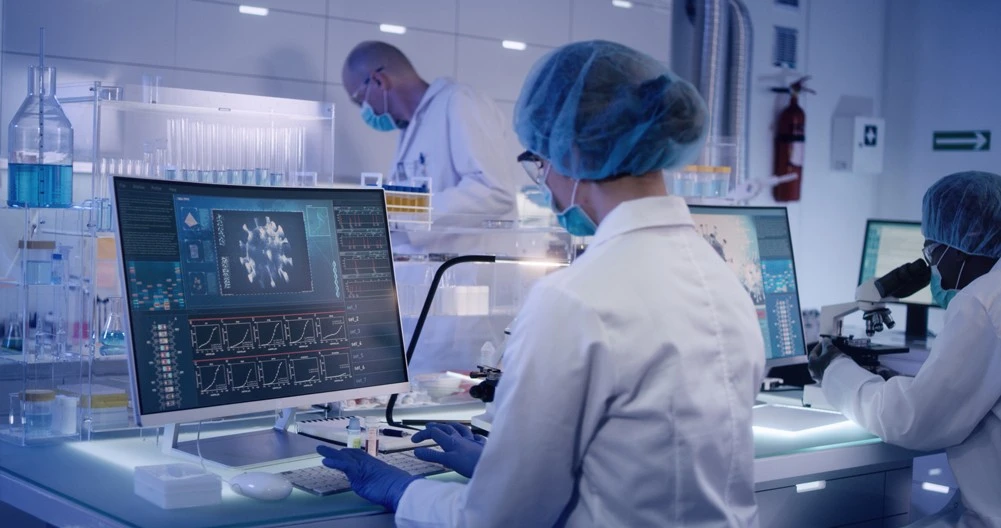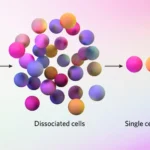Within the expansive domain of science lies an intriguing intersection where biology converges with computer science – Bioinformatics. Here, Bioinformatics Scientist wield computational tools and techniques to unravel the enigmas of life.
This article explores the roles of Bioinformatics Scientists, the pathway to becoming one, the demand for this profession, and highlights the contributions of prominent figures in this dynamic field.
Also explore An Ultimate Guide to How to Become a Clinical Data Manger.
What Do Bioinformatics Scientists Do?
Bioinformatics Scientists, often referred to as computational biologists, are the architects of deciphering biological data using computer algorithms. They analyze DNA sequences, protein structures, and other biological information to extract meaningful insights. Their work extends across various domains:
1. Data Analysis:
Bioinformatics Scientists employ sophisticated algorithms to sift through massive datasets, identifying patterns, mutations, and genetic variations. For instance, they may analyze genomic data to understand the genetic basis of diseases like cancer or to predict potential drug targets.
2. Database Management:
These scientists are tasked with managing vast databases containing biological information. They ensure the accuracy, accessibility, and integrity of data, enabling researchers worldwide to access valuable resources. For example, they might maintain databases like GenBank or the Protein Data Bank, which store genetic sequences and protein structures, respectively.
3. Software Development:
Bioinformatics Scientists develop specialized software and tools tailored to biological research needs. These tools facilitate data analysis, visualization, and interpretation. For instance, they might create software for analyzing gene expression data or predicting protein structures.
4. Research:
Beyond data analysis and software development, Bioinformatics Scientists are actively involved in research. They explore new computational methods and algorithms to address emerging challenges in biology. For example, they may develop machine learning algorithms to predict protein-protein interactions or study the evolution of microbial communities using metagenomic data.

How to Get into a Bioinformatics?
Embarking on a career as a Bioinformatics Scientist requires a blend of education, skills, and practical experience:
1. Education:
Most Bioinformatics Scientists hold at least a bachelor’s degree in bioinformatics, computational biology, biology, computer science, or a related field. However, advanced positions often require a master’s or Ph.D. degree in bioinformatics or a specialized area of biology.
2. Skills Development:
Proficiency in programming languages such as Python, R, and Perl is essential for Bioinformatics Scientists. Additionally, they need a solid understanding of biology, genetics, statistics, and data analysis techniques. Many universities and institutes offer specialized courses and workshops in bioinformatics to enhance these skills.
3. Practical Experience:
Hands-on experience is invaluable for aspiring Bioinformatics Scientists. Internships, research projects, or entry-level positions in bioinformatics laboratories provide opportunities to apply theoretical knowledge to real-world problems. Many top research institutions and biotech companies offer internships and research fellowships for students interested in bioinformatics.

Top Institutes for Bioinformatics Education
Several renowned institutions around the world offer exceptional programs in bioinformatics:
- Harvard University – Department of Biostatistics and Computational Biology
- Stanford University – Department of Biomedical Data Science
- Massachusetts Institute of Technology (MIT) – Department of Biological Engineering
- University of California, Berkeley – Department of Bioengineering and Center for Computational Biology
- European Bioinformatics Institute (EBI) – Provides training and resources for bioinformatics research in Europe
Online Courses for Aspiring Bioinformatics Scientist
For individuals seeking to become Bioinformatics Scientists without pursuing a formal degree, online courses offer a flexible and accessible pathway:
- Coursera – Offers courses like “Bioinformatics Specialization” by the University of California, San Diego, covering topics from sequence alignment to phylogenetics.
- edX – Provides courses such as “Bioinformatics MicroMasters Program” by the University of Maryland, covering genomics, sequence analysis, and molecular evolution.
- Khan Academy – Offers introductory courses on biology and computer science, providing foundational knowledge for aspiring bioinformaticians.
- Rosalind – An interactive platform for learning bioinformatics through problem-solving exercises and challenges.
- Codecademy – Offers programming courses in Python, R, and other languages commonly used in bioinformatics.
How Long Does It Take to Become a Bioinformatics Scientist?
The time it takes to become a Bioinformatics Scientist varies depending on individual circumstances and career goals. Generally, it takes:
- Bachelor’s Degree: Four years to obtain a bachelor’s degree in a relevant field such as bioinformatics, computational biology, biology, or computer science.
- Master’s Degree: An additional two years to complete a master’s degree program, focusing on bioinformatics or a related field.
- Ph.D. Degree: Another four to five years to earn a Ph.D. in bioinformatics or a related discipline, which is often required for advanced research positions or academia.
Overall, it may take around 6 to 10 years of education and training to become a proficient Bioinformatics Scientist.
Also learn about How to Transition from Biotechnology to Data Science in Biotechnology?
Top World Bioinformatics Scientists and Their Contributions
- Dr. David Haussler: Dr. Haussler is renowned for his work in developing the UCSC Genome Browser, a vital tool for visualizing and analyzing genomic data. His contributions to computational genomics have revolutionized the field, enabling researchers worldwide to explore the human genome and its variations.
- Dr. Ewan Birney: As one of the leading figures in bioinformatics, Dr. Birney played a pivotal role in the Human Genome Project and co-led the ENCODE project, unraveling the functional elements of the human genome. His work has significantly advanced our understanding of genomics and gene regulation.
- Dr. Aviv Regev: Dr. Regev’s research focuses on single-cell genomics and computational methods for analyzing complex biological systems. Her pioneering work has shed light on cellular diversity, gene expression dynamics, and regulatory networks, paving the way for personalized medicine and therapeutic development.
- Dr. Trey Ideker: Dr. Ideker is known for his contributions to network biology and systems biology. His research integrates computational and experimental approaches to elucidate molecular pathways underlying diseases and identify potential drug targets. His work has implications for understanding disease mechanisms and developing precision medicine strategies.
- Dr. Janet Thornton: Dr. Thornton is a prominent figure in structural bioinformatics, specializing in the prediction and analysis of protein structures. Her research has led to the development of algorithms and tools for protein structure prediction, protein-ligand interactions, and drug design, facilitating drug discovery efforts and protein engineering.

What is the Job Demand for Bioinformatics Scientists?
The demand for Bioinformatics Scientists is on the rise due to the increasing reliance on computational methods in biological research and the growing availability of biological data. Industries such as pharmaceuticals, biotechnology, healthcare, and academia seek skilled professionals to tackle complex biological problems. With advancements in genomics, personalized medicine, and drug discovery, the demand for Bioinformatics Scientists is expected to continue growing in the coming years.
Conclusion
Bioinformatics Scientists occupy a unique niche at the intersection of biology and computer science, where they harness computational tools to unlock the secrets of life. With the demand for skilled bioinformaticians on the rise, pursuing a career in this field offers opportunities for meaningful research and innovation. Whether through formal education or online courses, aspiring bioinformaticians can embark on a journey to contribute to groundbreaking discoveries and advancements in biomedicine and beyond.
Read about 8 Biological Data Science Careers To Look Forward To in 2024.







